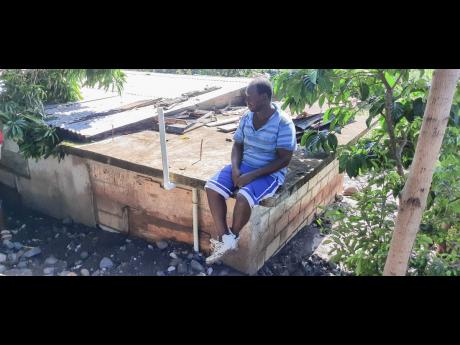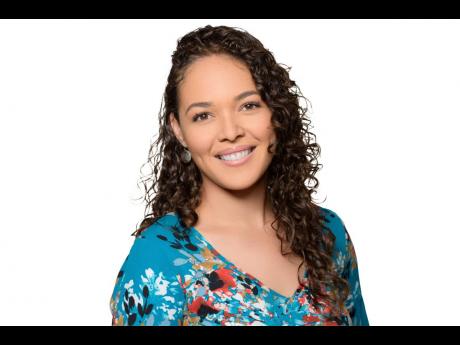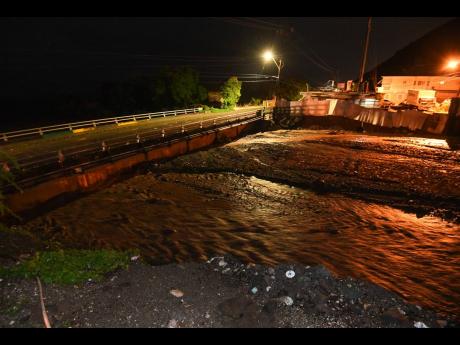Theresa Rodriguez-Moodie | Bull Bay – a sacrificial zone?
In May 2002, following heavy rain, the Cane River on the border of St Andrew and St Thomas broke its banks and flooded the community of Bull Bay, where my parents lived. I was getting ready for my A-levels that morning. We were fortunate – the rocks and silt did not penetrate our home, but our neighbours were not so lucky. According to community members, photos, and reports, quarrying in the hills above Bull Bay was at least partially responsible for this catastrophic flood event. To my knowledge, no one was ever compensated for their loss.
The Bull Bay communities of Nine, Ten and Eleven Miles are in the parishes of St Andrew and St Thomas and are located on the flood plains of Salt Spring River, Chalky River, Bull Park River, Spring Gut River and Cane River. Since the 1940s, the hills above Ten and Eleven Miles (Border of St Thomas) have been the centre of gypsum quarrying for use in the cement industry. These quarries have passed through a series of owners, not all of whom were required to undertake reclamation once quarrying was completed. The quarrying provided much-needed jobs but has left the community vulnerable to flooding.
The process of crushing gypsum generates large amounts of loose material, which is washed down and deposited in river channels whenever heavy rainfall occurs. If not cleared, this material raises riverbed levels, constricting the flow of water under bridges, flooding surrounding communities. Residents of Bull Bay have complained that during the floods of 2002 and 2020 in particular, they lost livestock, personal belongings, cars, and houses in these events.
After decades of quarrying in the hills of Bull Bay, the most recent owners of Carib Cement Company have closed a major quarry, known as Bito, since 2008/2010. They now say the responsibility to reduce siltation in the rivers is no longer theirs and should be carried out by the Jamaican taxpayers.
NO MEANINGFUL RESPONSE
Over the years, members of the Bull Bay communities have written letters to regulators, the prime minister, the member of parliament for the area and Carib Cement and have not received a meaningful response. They have staged peaceful protests, circulated images and videos on social media and attended numerous meetings in an effort to protect their lives and livelihoods. In 2010, members of the Bull Bay community contacted the Jamaica Environment Trust (JET) out of concern that a similar flooding event could occur again. In 2011, with assistance from the Environmental Law Alliance Worldwide (ELAW), JET prepared and submitted a report which suggested options for minimising the risk of a catastrophic failure from mine waste piles, as well as recommendations for rehabilitation (reclamation) activities to reduce the risk of flooding in the lower areas where residents live. It is not clear if any of these actions were considered or undertaken.
The Mines and Geology Division (MGD) grants quarry licences and the Natural Resources Conservation Authority (NRCA) and the National Environment and Planning Agency (NEPA) grant environmental permits to quarry operators. Once quarries are no longer in use, the quarry operator is required to rehabilitate the entire area to the satisfaction of MGD. The Bito quarry above Bull Bay, closed in 2008/2010, is said to have been rehabilitated but the Bull Park River continues to be inundated with silt once there is heavy rainfall.
Who is responsible? Is this a regulatory failure due to inadequate rehabilitation of the quarry and failure to monitor? Did MGD require an adequate bond to pay for rehabilitation? Should Carib Cement be required to continue desilting the rivers, given they still have quarries operating at Halberstadt? Or should this now be the responsibility of the Ministry of Local Government and therefore Jamaican taxpayers?
Along with all Jamaicans, the residents of Bull Bay have a constitutional right to “enjoy a healthy and productive environment free from the threat of injury or damage from environmental abuse and degradation of the ecological heritage”. The community did not issue these quarry licences and did not sign off on rehabilitation. They believe that the Jamaican Government has a responsibility to either require Carib Cement to continue to desilt affected rivers or to appoint a body with responsibility to carry out the work on a continuous basis. It is an injustice to leave the communities, including legal landowners, to fend for themselves.
Theresa Rodriguez-Moodie, PhD, is chief executive officer of Jamaica Environment Trust (JET). Send feedback to jamaicaenvironmenttrust@gmail.com




